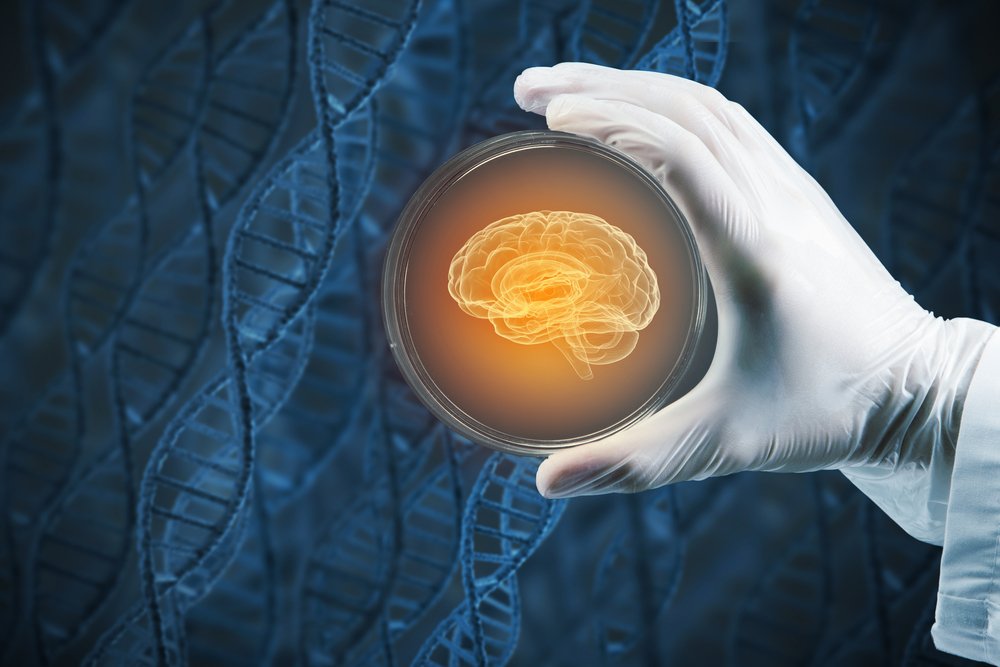Abnormal Brain Cell Type Leads to Parkinson’s-Related Neurodegeneration, Study Contends

Scientists have found that an abnormal version of brain cells called astrocytes contribute to the accumulation of alpha-synuclein protein, the main component of Parkinson’s disease hallmark Lewy bodies.
Their study, “Patient-specific iPSC-derived astrocytes contribute to non-cell autonomous neurodegeneration in Parkinson’s disease,” was published in Stem Cell Reports.
Parkinson’s disease is linked to degeneration of the ventral midbrain (relating to the inferior part of the brain), a region that houses dopamine-releasing neurons.
Post-mortem analysis of Parkinson’s disease brain tissue has revealed astrocytes accumulate toxic amounts of alpha-synuclein during the disease process. Research also suggests that this toxic protein can be taken up and spread from astrocytes to neurons, causing neuronal death.
Astrocytes are star-shaped cells that outnumber neurons by fivefold. Found in the central nervous system, astrocytes are known as housekeeping cells because they care for neurons, nurture them and “clean up” after them.
Investigators set up to further investigate a role for Parkinson’s disease-related astrocyte dysfunction in midbrain nerve cell death.
Interested in Parkinson’s Disease research? Sign up for our forums and join the conversation!
They generated astrocytes and ventral midbrain dopaminergic neurons from induced pluripotent stem cells (iPSCs) of healthy individuals and of patients with the LRRK2 G2019S mutation, the most commonly found mutation in Parkinson’s disease.
iPSCs are derived from either skin or blood cells that have been reprogrammed back into a stem cell-like state, which allows for the development of an unlimited source of almost any type of human cell needed.
Although LRRK2’s main function is not known, it seems to play a key role in mitochondria — cells’ powerhouses — namely in autophagy, a process that allows cells to break down and rebuild their damaged components.
Healthy neurons and Parkinson’s astrocytes were together in the same lab dish to study their cellular interactions. Results revealed a significant decrease in the number of healthy ventral midbrain dopaminergic neurons when cultured together with Parkinson’s disease astrocytes, which was associated with astrocyte-derived alpha-synuclein aggregation.
Healthy neuronal death was caused by the shortening and disintegration of the cells’ projecting branches, known as axons and dendrites.
When healthy astrocytes were cultured with Parkinson’s neurons, the housekeeping cells partially prevented the appearance of disease-related cellular changes and alpha-synuclein buildup in the diseased neurons.
“We found Parkinson’s disease astrocytes to have fragmented mitochondria, as well as several disrupted cellular degradation pathways, leading to the accumulation of alpha-synuclein,” the study’s co-first author Angelique di Domenico, PhD, said in a press release.
Because Parkinson’s astrocytes had high levels of alpha-synuclein in them, researchers hypothesized that the toxic protein could be transferred to healthy dopamine-producing neurons and cause the damage they had previously observed.
Using the CRISPR-Cas9 gene editing tool, the team generated two new astrocyte lines (representing one Parkinson’s patient and one healthy control). This allowed them to “tag” alpha-synuclein within living cells and track the protein as it was generated by astrocytes and transferred to dopamine-producing neurons.
As expected, alpha-synuclein in Parkinson’s astrocytes accumulated at abnormally high levels and, upon culture with healthy dopamine-producing neurons, a direct transfer of astrocytic alpha-synuclein to neurons was observed.
Researchers then used this gene-editing technology to generate Parkinson’s astrocytes that lacked the LRRK2 G2019S mutation. Abnormal alpha-synuclein accumulation did not occur in gene-corrected astrocytes and upon culture with healthy neurons, there was no accumulation of alpha-synuclein or decrease in neuron survival.
Researchers then treated Parkinson’s astrocytes with a chemical designed to correct the cells’ disrupted clean-up system.
“We were elated to see after treatment that the cellular degradation processes were restored and alpha-synuclein was completely cleared from the Parkinson’s disease astrocytes,” di Domenico said. “These results pave the way to new therapeutic strategies that block pathogenic interactions between neurons and glial cells.”






